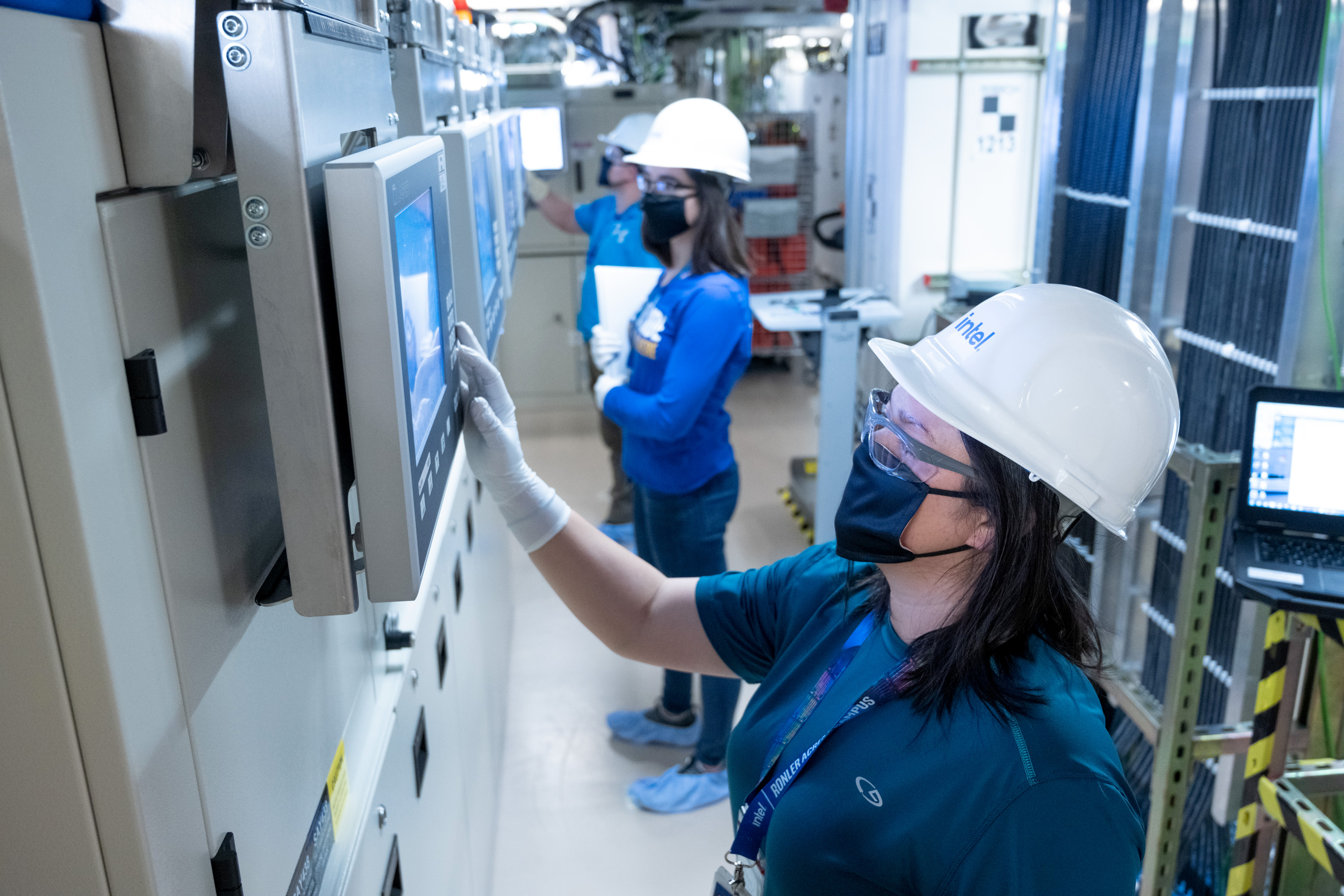
FILE: Intel employees in clean room "bunny suits" work at Intel's D1X factory in Hillsboro, Ore., in this provided photo.
Courtesy of Intel Corporation
Oregon employment officials are forecasting a wave of new semiconductor-related jobs to come online in the coming years, including more than 6,000 permanent jobs in the tech sector and 1,000 construction jobs to support the anticipated expansion. But finding the people to fill those jobs is still a problem business leaders, higher education officials and lawmakers are trying to solve. And it’s something they’ll have to figure out quickly if Oregon wants to be a viable contender for the billions of federal dollars available to build up the nation’s semiconductor industry.
House Bill 4154 creates the Semiconductor Talent Sustaining Fund, which would invest money to support existing chipmaking partnerships and develop new efforts between the manufacturing and technology industry and K-12 and higher education schools. The state’s Higher Education Coordinating Commission would be in charge of granting money from the fund to schools, tech companies and community-based organizations focused on developing the semiconductor workforce.
The HECC would apply recommendations from manufacturing and technology taskforce groups established within its Future Ready Now initiative as well as suggestions from a recently released semiconductor workforce assessment.
This bill comes a year after the Legislature made a $240 million investment in the state’s burgeoning semiconductor industry, which includes tech giant Intel. That infusion is part of Oregon’s bid to compete for some of the $52 billion for semiconductor development in the U.S. made available by the federal CHIPS and Science Act in 2022.
Kyle Ritchey-Noll, director of education and workforce policy with the Oregon Business Council, says HB 4154 is an extension of the investments Oregon made in the semiconductor industry last year.
“These investments rely on our state’s commitment to have a skilled, diverse workforce to step into those jobs,” said Ritchey-Noll. “This bill addresses the need to be very strategic, very focused.”
The bill, which easily passed the Oregon Senate Thursday, is pared down from what was first introduced in February. Bill authors originally asked for the creation of a statewide semiconductor industry taskforce that would develop a strategy for investments in the chipmaking workforce. It also asked for $30 million to be split up, with half going to the talent fund, and half going to state universities and community colleges with existing semiconductor job training programs.
The version now headed to the governor’s desk nixed the taskforce and seed money intended for the talent fund. The nearly $15 million ask for post-secondary schools was cut down to about $10 million and moved into SB 5701, the Legislature’s catch-all, end-of-year spending bill. That money will be shared among Oregon State University, University of Oregon, Oregon Institute of Technology, Portland State, and Mt. Hood and Portland community colleges.
“The Legislature was more comfortable with making a one-time, direct allocation into the existing higher education programs that are already graduating Oregonians into the semiconductor field,” said Ritchey-Noll of the additional financial investments originally asked for in the bill. She said lawmakers were not comfortable with putting money towards the fund without a semiconductor workforce plan.
An amendment to HB 4154 from the governor’s office allows excess money from last year’s big investment in the existing semiconductor industry to be transferred to the talent fund for spending on workforce development. It’s unknown if and when any excess semiconductor money might flow into the fund this year. Semiconductor workforce advocates are now looking to the 2025 legislative session as a way to get money into the talent fund.
“HB 4154 is different from our original concept,” said Ritchey-Noll. “But we’ve got those short term wins in these direct allocations to schools, we’ve got that longer term opportunity through this fund and I think that’ll set us up to invest in semiconductor talent.”





